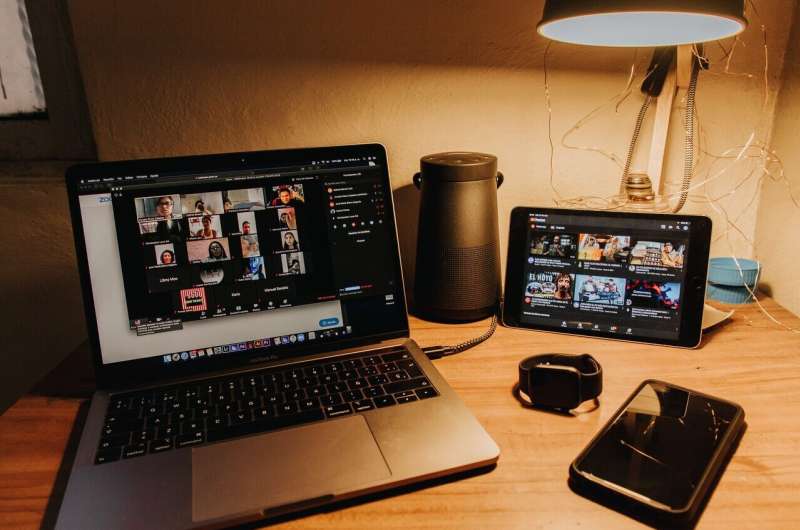Why a dedicated Zoom device makes sense

In the beginning of the week, Microsoft announced something that, at first blush, sounds so cool, until you start to break it down.
A dedicated video device for Teams meetings, a whopping 85 inches for display in a conference room or hospital corridor, so large everyone could see it, and be seen.
No longer would we have to fiddle around with the laptop or phone. Just gather in front of the TV and click the touchscreen.
But at a price tag of $21,999, gosh, that's just a little bit north of our budgets, wouldn't you say?
So you've got to love Amazon's answer, which came later in the week. A dedicated 10-inch unit, for $250, the Echo Show 10, which lets you go through Alexa to connect to Zoom, Skype or Alexa-to-Alexa direct calls.
Again, no fiddling. This time, just use Alexa, your Zoom calendar and voice computing to connect.
Or better yet, plug a webcam to the TV via the $119 Fire TV Cube device and do it on the big screen TV of your choice. Maybe not 85 inches, but many of us have good 50 to 60 inches or larger in the living room. If not, Best Buy would be happy to sell you a 50-inch TCL, Samsung or Amazon-branded Toshiba TV in the $300 range.
The Amazon solutions are both listed as coming soon, but if you have a Facebook Portal video chat device, you can use the dedicated unit to connect now to Zoom. The update started rolling out Friday.
The Portals start at $129, and are available in three sizes: with 8-inch, 10-inch or 15.6-inch screens. An edition that connects to the TV, Portal TV, is not supported for the Zoom calls.
The smart displays were originally marketed as places for video chat first, then using the video screen to look up recipes on YouTube, operate your smart home and best of all, as economical and easy to mount digital photo frames.
Those features are still sound, but add in the dedicated Zoom device, and the kids who are stuck at home taking school on their laptops can have one unit just displaying the teacher and lessons. This would leave the students hands freer for schoolwork and notetaking on the laptop.
For those who are taking meetings all day, the same issue applies. Isn't it hard to take notes when your laptop screen is filled with speaker video windows? Plus, this way, you wouldn't have to worry about webcam placement. After all, it's best to be at eye level, which most people ignore, and not have the webcam looking up at their chins and noses. That requires stacking the laptop atop a bunch of books, which gives you a better look, but makes it really hard to type.
So the savvy speaker or student would have to constantly move the books around. That dedicated device on the desk would solve the issue, living atop the books that could just stay there and not have to be moved around.
Meanwhile, that's not all folks. On Wednesday, Google holds its annual fall hardware product event, where it's expected to unveil a new top of the line smartphone, the Pixel 5, an updated streaming device, Chromecast and a new take on the Nest Home Hub video display unit.
Last year's Nest didn't work with Zoom or initially with Google's Meet, the video chat service Google heavily touts as a Zoom alternative. (It does now, but setup is highly convoluted. You ask Google to set up a meeting, then need to click the touchscreen to confirm. Google generates a code to send to your guests, which it sends to your phone, via the Assistant app. You open your phone, copy the invite, and text or e-mail the invite. Got that?)
Meanwhile, Google has already said it will begin accepting calls from Zoom on Nest Hubs before the end of the year, so expect more action and hopefully improved usability.
Finally, we began this edition by talking about that crazy Microsoft TV/PC.
What if you want to put Zoom calls on your TV now, without having to wait for Amazon's Fire TV Cube update?
TVs with built-in webcams are rare, and besides, how would you connect to Zoom without a computer?
Exactly.
To get Zoom on the TV, all you need is a laptop, an HDMI cable, adapter to plug it into your laptop and webcam, and you're in business.
Connect the HDMI cable from the TV to laptop, plug in the webcam and position it well (so it doesn't look up your nose) change your HDMI settings on the TV to bring in the laptop, and you've got a Zoom call on the big screen. You'll just need to operate it from your laptop. Without spending $21,199!
(c)2020 U.S. Today
Distributed by Tribune Content Agency, LLC.



















